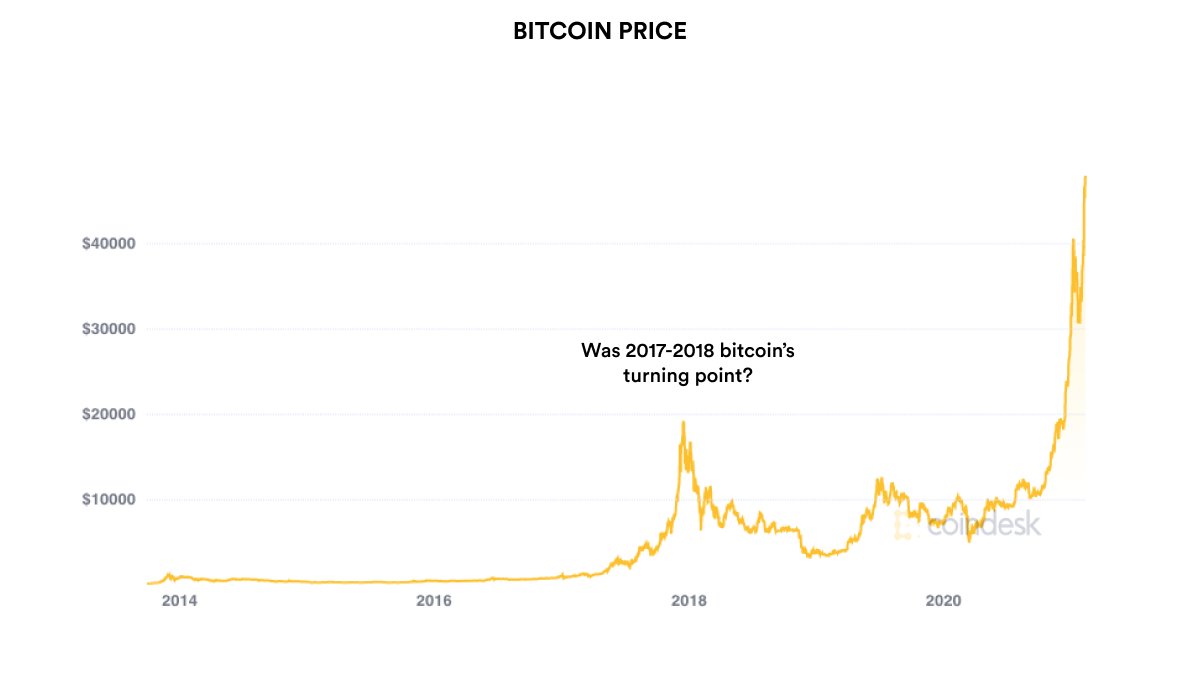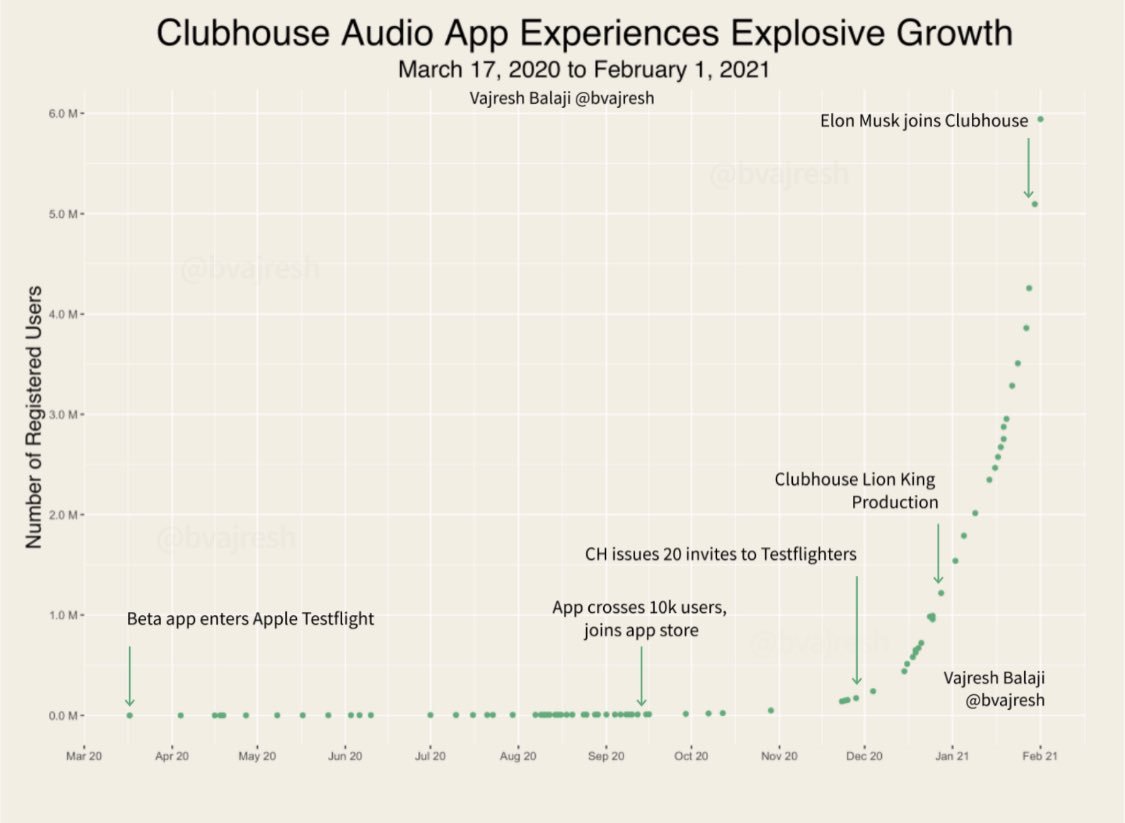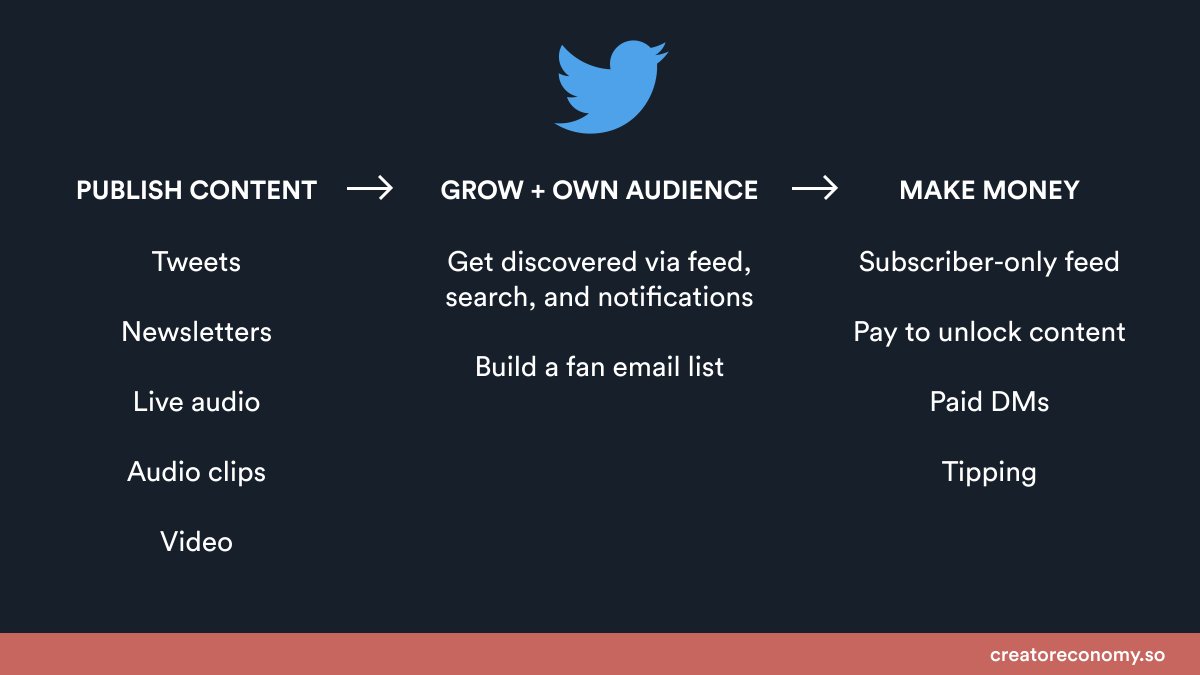
📈 Perez Framework for Bitcoin and NFTs
Carlota Perez broke down past technology cycles into 2 phases and 4 steps:
1. Installation phase
a) Irruption
b) Frenzy
2. Deployment phase
c) Synergy
d) Maturity
A quick look at how this framework could apply bitcoin and NFTs 👇
Carlota Perez broke down past technology cycles into 2 phases and 4 steps:
1. Installation phase
a) Irruption
b) Frenzy
2. Deployment phase
c) Synergy
d) Maturity
A quick look at how this framework could apply bitcoin and NFTs 👇

1/ The phases/steps are:
1. Installation phase
a) Irruption: Funding for new tech and infra
b) Frenzy: Speculation leads to asset bubbles.
2. Deployment phase
c) Synergy: Inequality leads to crash + regulation of the financial sector.
d) Maturity: Tech is broadly adopted.
1. Installation phase
a) Irruption: Funding for new tech and infra
b) Frenzy: Speculation leads to asset bubbles.
2. Deployment phase
c) Synergy: Inequality leads to crash + regulation of the financial sector.
d) Maturity: Tech is broadly adopted.
2/ What's interesting is that there has always been a crash between the installation and deployment phases in past tech waves.
Let's look at how this could apply to Bitcoin and NFTs...
Let's look at how this could apply to Bitcoin and NFTs...

3/ Bitcoin
Bitcoin's installation phase was arguably in 2017 when retail speculators dominated the market before the price crashed.
It could now be entering the deployment phase as a wave of companies and governments enter bitcoin positions.
Bitcoin's installation phase was arguably in 2017 when retail speculators dominated the market before the price crashed.
It could now be entering the deployment phase as a wave of companies and governments enter bitcoin positions.

4/ NFTs
I think NFTs are entering the frenzy step of the installation phase right now (e.g., socks selling for $35K).
It'll be interesting to see if NFT prices will crash before growing again.
I think NFTs are entering the frenzy step of the installation phase right now (e.g., socks selling for $35K).
It'll be interesting to see if NFT prices will crash before growing again.

5/ In the context of Carlota's framework, speculation is a natural step of the lifecycle of a new technology.
Speculation leads to asset bubbles but also interest from builders which drives new tech adoption long-term.
Thanks to @patrickxrivera for sharing this framework.
Speculation leads to asset bubbles but also interest from builders which drives new tech adoption long-term.
Thanks to @patrickxrivera for sharing this framework.
• • •
Missing some Tweet in this thread? You can try to
force a refresh







